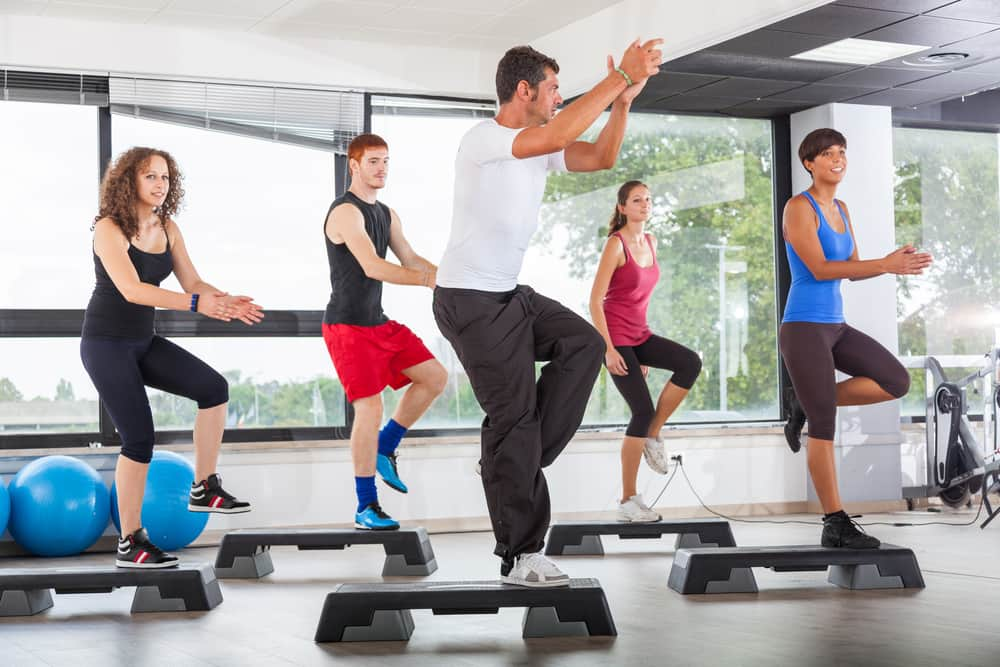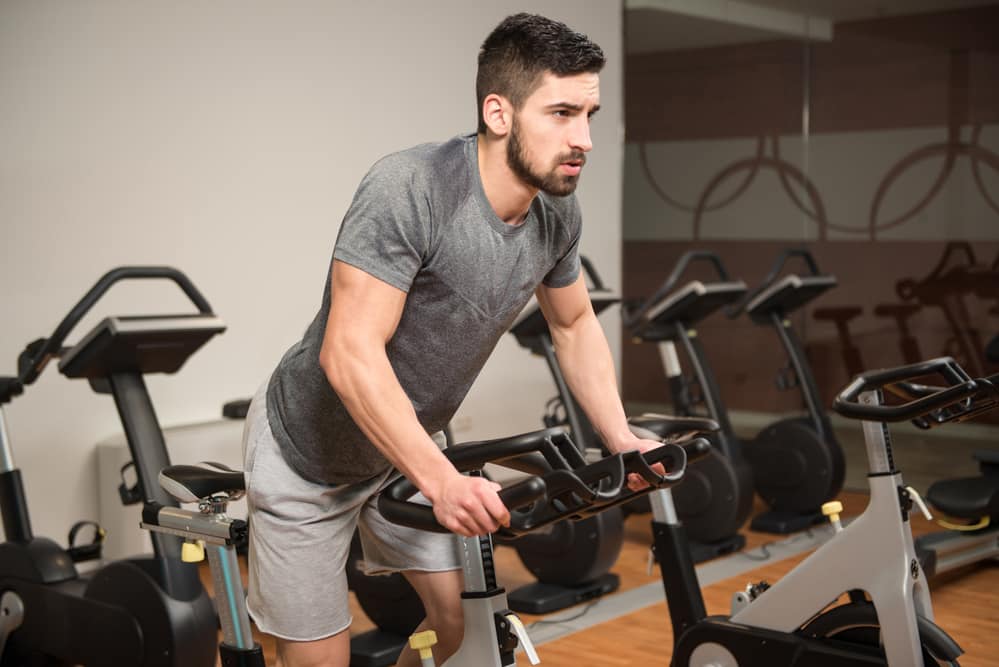Do you like doing cardio exercises? If so, you must have heard of the LISS vs HIIT debate. And you might be asking the same question as everyone else: which type of training should you follow?
There is no fixed answer for this since the right program depends on your health status, preference and lifestyle. LISS is a longer-duration activity that’s joint and beginner-friendly. On the other hand, HIIT is shorter in duration but intense and challenging.
To help you choose the best, let’s compare the two based on their pros and cons.
Also, I’ll be identifying specific fitness levels or goals and matching them with the ideal training mode.
LISS vs HIIT: What’s the Difference?
When choosing between LISS and HIIT, a good starting point is to know what they are and what they can do for your body.
LISS
Let’s start with LISS or low-intensity steady-state cardio.
Steady-state training involves any cardio exercise of your choice at low-to-moderate intensity for an extended period.
One good example of LISS is the 12-3-30 treadmill incline workout.
Its goal is to maintain your maximum heart rate at about 50% to 60%.
Within this range, you will not be out of breath and still be able to talk while exercising.
Depending on your fitness capacity, you can do a LISS session for 30 to 60 minutes.
Here are its pros and cons.
| PROS | CONS |
| Easier on the joints, tendons and ligaments | Time-consuming |
| Very low injury risk | Monotonous and less motivating |
| Improved endurance and cardiovascular health | Causes fitness plateaus |
| Quicker workout recovery | No afterburn effect or excess post-exercise oxygen consumption (EPOC) |
| Initially induces body fat loss | Lower power and body strength development |
HIIT
HIIT stands for high-intensity interval training.
And like LISS, you can do this workout with any cardio exercise or machine, like treadmills, stationary bikes or indoor rowers.
However, this one involves pushing your heart rate to its maximum capacity, then recovering within a minute or two before repeating the cycle.
In simpler terms, it’s a training mode where you’ll work very hard and catch your breath alternately.
Because it is very challenging, a typical HIIT session will not last for more than 30 minutes.
Here are its pros and cons.
| PROS | CONS |
| Shorter, more time-efficient sessions | Physically and psychologically demanding |
| High afterburn effect | Higher injury risk |
| Better muscle activation and retention | Slower workout recovery |
| Boosts heart health | Not for all fitness levels |
| Long-term body fat loss | Can be intimidating |
LISS vs HIIT Comparison Summary
Both LISS and HIIT are effective cardio training modes.
But they are also distinctly different, and we can sum it all up using three factors: intensity, duration and outcomes.
With workout intensity, LISS and HIIT are like day and night. The former is more relaxed, while the latter requires max effort.
And this explains why LISS suits all fitness levels. Compared with HIIT, LISS is more doable, whether you’re a beginner or a seasoned gym-goer.
However, not everyone can spend 30 to 60 minutes on daily exercise. And this is where HIIT becomes a better option.
Also, HIIT is the way to go if you’re after quicker and more sustainable fitness outcomes.
With this training style, you’ll burn calories and fat within a shorter period.

LISS vs HIIT: Which One is Right for Me?
We now know that both LISS and HIIT have benefits and downsides.
But let’s compare them further by putting our fitness capacity and goals into play.
Here are a few questions to ask yourself, so you can decide whether LISS or HIIT is for you.
Are you a fitness beginner?
If you’re a newbie, someone with weight issues or a returning gym-goer, LISS can help you ease into a more active lifestyle.
The low-intensity exercises in this training can effectively warm your body and make it more flexible.
HIIT workouts can be too intense for your joints if you haven’t worked out for some time.
So, the risks of injury or pain are higher if you start with high-intensity training.
Intense exercise can also tire you out too soon before you can enjoy its benefits.
And not completing a training session will only lessen your motivation to stay fit and active.
Are you looking for ways to get your body moving?
People with this goal are usually the elderly and those who want to maintain their healthy weight or meet daily activity requirements.
If you have a similar fitness goal, doing regular LISS workouts is better than HIIT.
Low-to-moderate training can improve your cardiorespiratory health and stamina.
As a result, you can easily do daily activities without feeling any body pain.
Consistent LISS cardio is also a way to combat age-related health conditions.
Do you want to burn calories and lose weight efficiently?
There are a few reasons why HIIT can help you better with this fitness goal.
One is that higher exercise intensity results in more calories burned.
Intense cardio workouts boost your heart rate quickly.
And when this happens, you also increase your oxygen uptake, resulting in a higher metabolic rate.
Another reason is that HIIT produces an afterburn effect or EPOC. This bodily reaction allows you to burn calories post-workout.
And it can last for 12 to 48 hours. That means doing HIIT two to three times a week can considerably boost your total caloric burn even while at rest.
LISS can also burn calories. But you’ll need lots of hours to burn as many calories as you would with a few HIIT sessions.
Moreover, with LISS, there’s no afterburn effect, meaning you stop burning calories when your cardio session is over.

Are you a busy person with little time for exercise?
Based on the LISS vs HIIT comparison earlier, we know the latter is a short-duration program.
And that means people who can only spend 20 minutes or less for cardio training can benefit from regular high-intensity workouts.
Aside from busy individuals, I think people with shorter attention spans or those who like exercise variety and fast-paced workouts will appreciate HIIT more.
The quick intervals throughout this training style can keep them focused and engaged.
Also, it is easier to commit to a workout routine that’s short and doable whenever you are free.
Do you need to enhance your athletic performance?
As HIIT involves short, high-intensity bursts of activity, it can help in speed and endurance development, which athletes need to perform well.
Several studies also linked HIIT to better sports performance.
A 2017 study, for instance, concluded that a HIIT-based running plan for triathletes led to better performance due to improved muscle power.
Another reason why HIIT is best for enhancing athletic skills is because of anaerobic and aerobic metabolism.
During high-intensity exercise, your body uses the energy stored in the muscles.
This reaction produces lactic acid as a by-product, which causes fatigue and muscle soreness.
However, as you go into active recovery mode during HIIT, oxygen enters the body, which breaks down lactic acid.
This repetitive cycle allows athletic individuals to stretch their limits and exercise at higher intensities for longer before fatigue sets in.
Conclusion
So, which do you think is the winner of this LISS vs HIIT battle? Both are excellent when we consider their health benefits.
But if your ideal workout is a moderate jog outdoors, incline walks on a treadmill or dancing with an aerobic stepper, then LISS wins.
However, for challenge-seekers who like doing explosive exercises, HIIT is best.
As for me, I prefer incorporating both into my weekly routine.
Combining these two ensures exercise variety, and you get the best of both worlds.
Also, alternating LISS and HIIT gives the body time to recover and prevents you from overusing any muscle group.

Related Questions
1. How is HILIT different from HIIT?
HILIT (high-intensity, low-impact training) boosts the heart rate and caloric burn through joint-friendly exercises. Some good examples of HILIT are swimming and boxing. On the other hand, HIIT centres on full-body, more strenuous routines.
2. How can I level up my LISS and HIIT workouts?
You can make your LISS workouts more challenging by doing different cardio activities, like running, rowing and cycling. With HIIT, you can modify your routines by decreasing your recovery periods, increasing the work time or adding more strength-based movements.
- Is Eating Right Before Workout Ideal? - 5 February 2025
- How Do Smart Treadmills Enhance Workouts? - 4 February 2025
- Why Does My Skin Itch After Using a Massage Gun? - 3 February 2025
